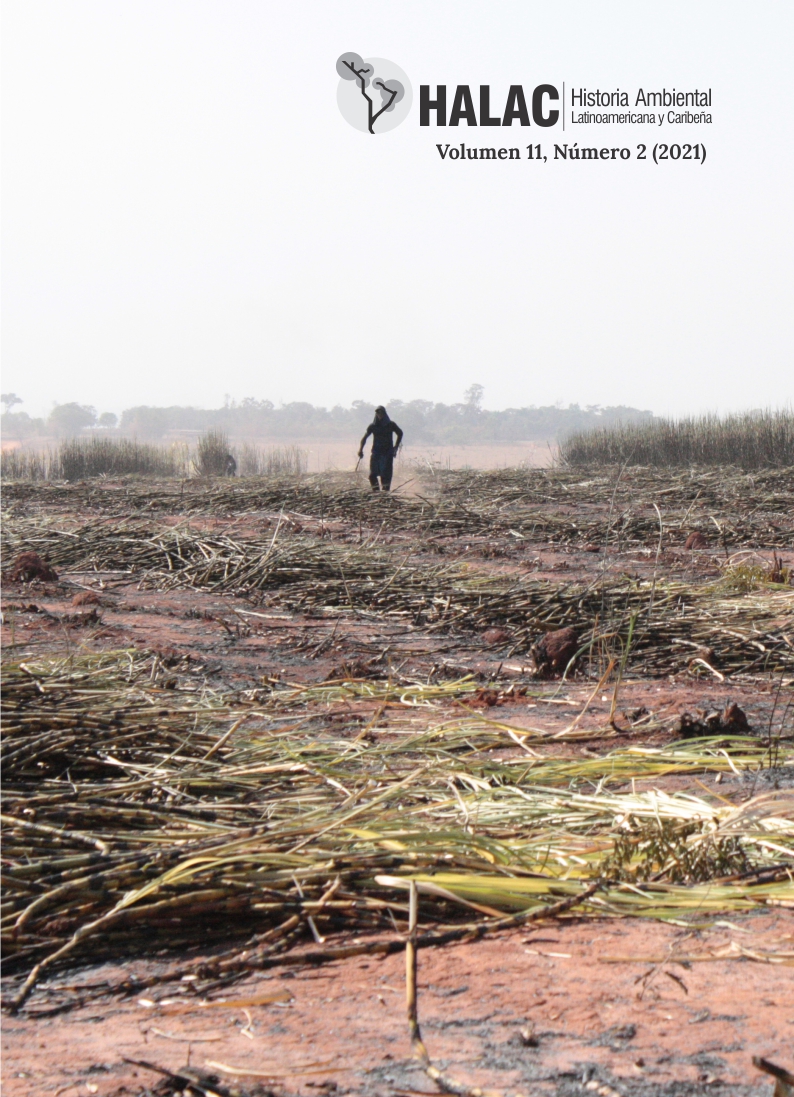Looking at the Landscape from the Sócio-Environmental History. Territorial Reconfiguration in las Cañadas de Ocosingo, Chiapas (1995-2018)
DOI:
https://doi.org/10.32991/2237-2717.2021v11i2.p101-135Keywords:
EZLN, Land Use, Deforestation, Cañadas de Ocosingo, Lacandon jungleAbstract
The Cañadas Avellanal and Taniperlas in 24 years went through a process of structural change that differentiated and modified them in their processes of territorial appropriation and land use. Between the 80-90s it was the productive specialization and the ELZN. Today (2018) they are the autonomous regime with Earth Theology and the conservationist with environmental policies. In these transitions, forests and jungles have been reduced 30.31% and 46.47% respectively. This article aims to explain the socio-environmental history of Avellanal and Taniperlas, and the social relationships in which the change in the landscape is expressed, through participant observation, field trips, interviews and meetings with key subjects, documentary review and satellite images. Three historical periods are observed where changes in the landscape are mainly explained by sociopolitical dynamics after the EZLN, more than for other reasons. 1.- Critical period of environmental deterioration, social destructuring, political-ideological dispute and the struggle for the leadership of Las Cañadas (1995-2001), 2.- Reconfiguration and political differentiations that seek to coexist (2002-2011) and 3.- Decline of common use areas in ejidos, land distribution, deforestation and intermittent migration (2012-2018). In each temporality the ecological and social processes were defined that, in continuous agreement, marked the evolution of the socio-environmental history of the regions and express the current landscape. Therefore, changes in the landscape are not unicausal, nor linear, but generally occur within the framework of social relations (at different scales) and in the social organizational capacity in the face of social and environmental conditions. The regional context in this case becomes relevant and its consideration is necessary in the elaboration of rural development proposals.
References
Bourdieu, Pierre. Campo de poder, campo intelectual. Montresor, 2002.
Cambpell, J.B. Introduction to remote sensing. Guilford: New York, 2007.
CONAGUA. COMISIÓN NACIONAL DEL AGUA. 2016. https://www.gob.mx/conagua (último acceso: 18 de octubre de 2019).
De Vos, Jan. Una tierra para sembrar sueños: una historia reciente de la Selva Lacandona, 1950-2000. México: FCE/CIESAS, 2002.
Deffontaines, Jean-Pierre, y Phillipe Prigent. «Lecture agronomique du paysage.» Mappemonde 87, 4 (1987): p. 34-37.
Foladori, Guillermo. «Avances y límites de la sustentabilidad social.» Economía Sociedad y Territorio, (2011): p. 621-637.
Foucault, Michael. «El sujeto y el poder.» Revista Mexicana de Sociología, (1988): p.3-20.
García, Manuel Andrés. «Historia y medioambiente: el sentido de la historia dentro del análisis ambiental por dimensiones.» Gestión y ambiente, (2006): p.91-98.
Haesbert, Rogério. «Del mito de la desterritorialización a la multiterritorialidad.» Cultura y Representaciones Sociales, (2013): 9-42.
Levy Tacher, Samuel Ismael, Rogelio J. Aguirre Rivera, María Magdalena Martínez Romero , y Alejandro Durán Fernández. «Caracterización del uso tradicional de la flora espotánea de la comunidad Lacandona Lacanhá, Chiapas México.» Interciencia, (2002): p. 512-520.
Linck, Thierry. «Introducción.» En Paisajes Agrarios de Michoacán, de Hubbert Cochet, Jean Damien Drugy y Léonard Eric, 11-34. México: El Colegio de Michoacán, 1988.
Long, Norman. Sociología del desarrollo: una perspectiva centrada en el actor. Centro de Investigaciones y Estudios Superiores en Antropología Social (CIESAS), México, 2007.
Márquez Rosano, Conrado. La produccion agrícola de la union de uniones ejidales y sociedades campesinas de producción de Chiapas. Problemáticas y perspectivas de desarrollo. (Tesis profesional, Universidad Autónoma Chapingo, 1988).
Márquez Rosano, Conrado, y María del Carmen Legorreta Díaz. «Apropiación territorial, cultura y poder: propuesta conceptual para el estudio de comunidades indígenas y campesina en el contexto mexicano.» Revista Orbis Latina 7, 3 (2017): p. 46-61.
Martínez, E, C.H Ramos, y F. Chiang. «Lista florística de la Lacandona, Chiapas.» boletín de la Sociedad botánica de México, (1994): p. 99-177.
Mestries, Francis. «Comunidad, movimiento, conflicto y ecología en Las Cañadas de la Selva Lacandona.» TRACE, (1999): p. 63-77.
Miranda, Faustino, y Efraím Hernández X. «los tipos de vegetación de México y su clasificación.» Botanical Sciences, (1963): p. 29.
Ortiz-Espejel, Benjamím, y Víctor Toledo. «Tendencias en la deforestación de la Selva Lacandona (Chiapas, México): El caso de Las Cañadas.» Interciencia 23, 6 (1998): p. 318-27.
Santos, Milton. La naturaleza del espacio. Técnica y Tiempo, razón y emoción. Barcelona, Ariel, 2000.
Toledo, Victor Mabuel, y C Carrillo. Conservación y desarrollo sostenido en la Selva Lacandona: el caso de Las Cañadas. Centro de Investigaciones de Energía y Desarrollo (CIEDAC). México, 1992.
Valtierra Zamudio, Jorge. La pastorial indígena del siglo XXI en el sur de México. Misioneros, sociedad civil y gobernanza. México: Scriptus, 2015.
Downloads
Published
How to Cite
Issue
Section
License
This journal offers immediate free access to its content, following the principle that providing free scientific knowledge to the public provides greater global democratization of knowledge.
As of the publication in the magazine the authors have copyright and publication rights of their articles without restrictions.
The HALAC Magazine follows the legal precepts of the Creative Commons - Attribution-Non-Commercial 4.0 International license. 




